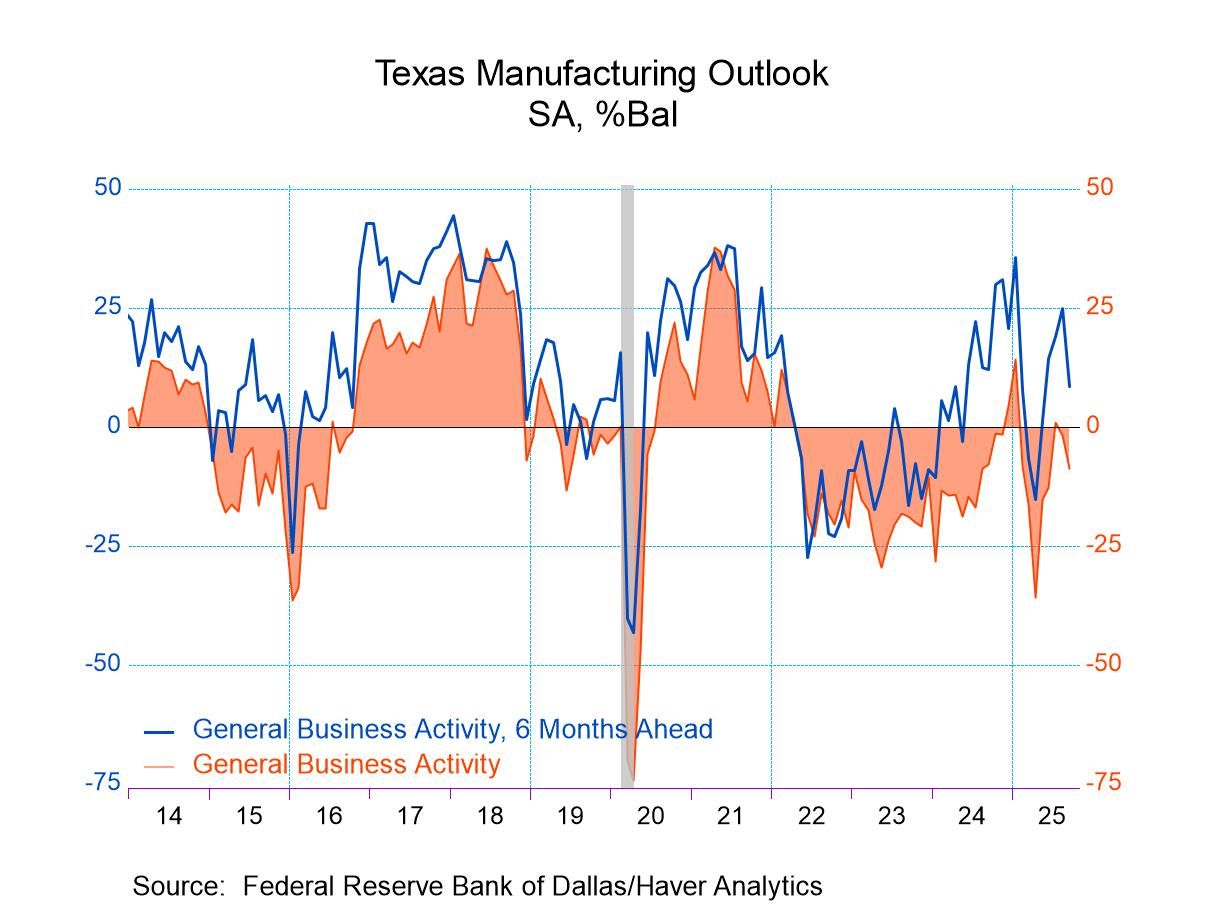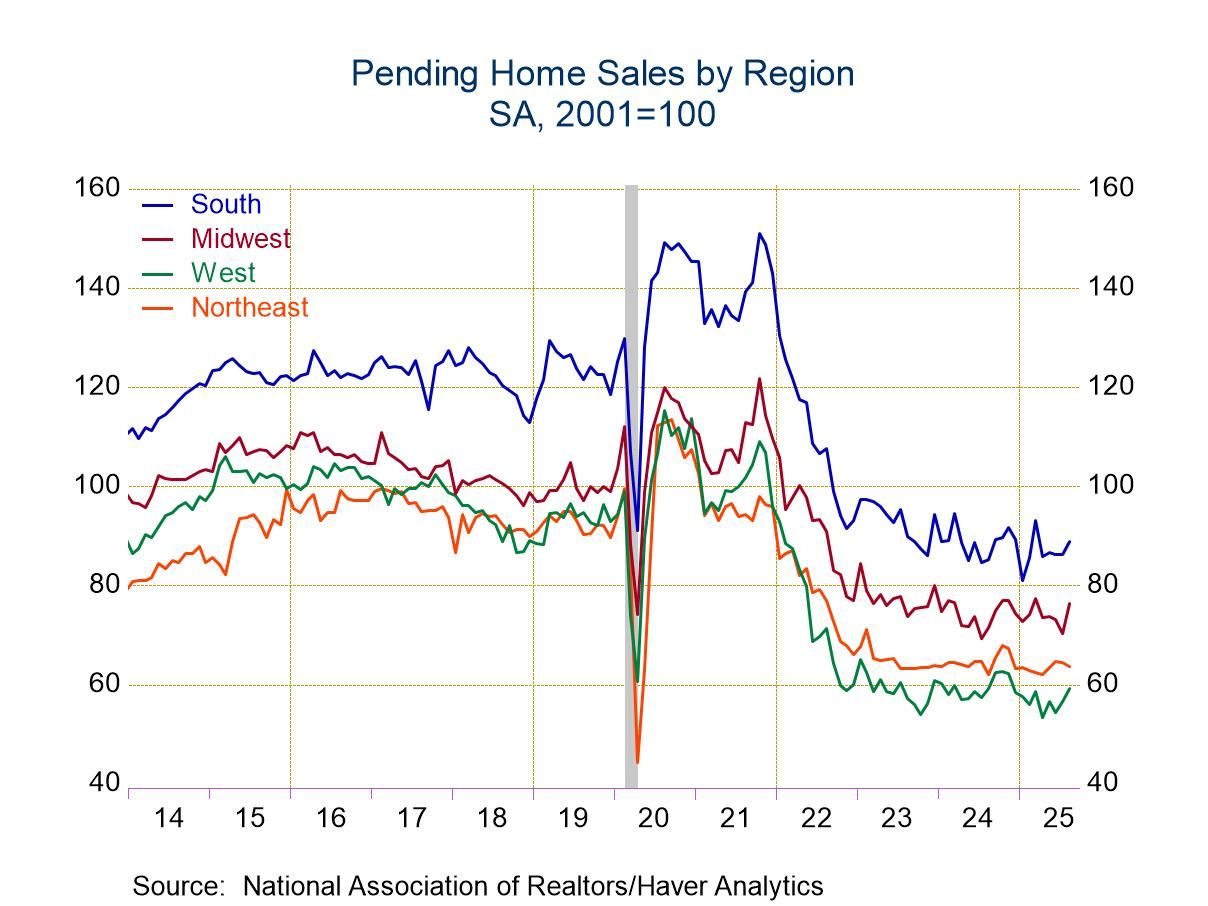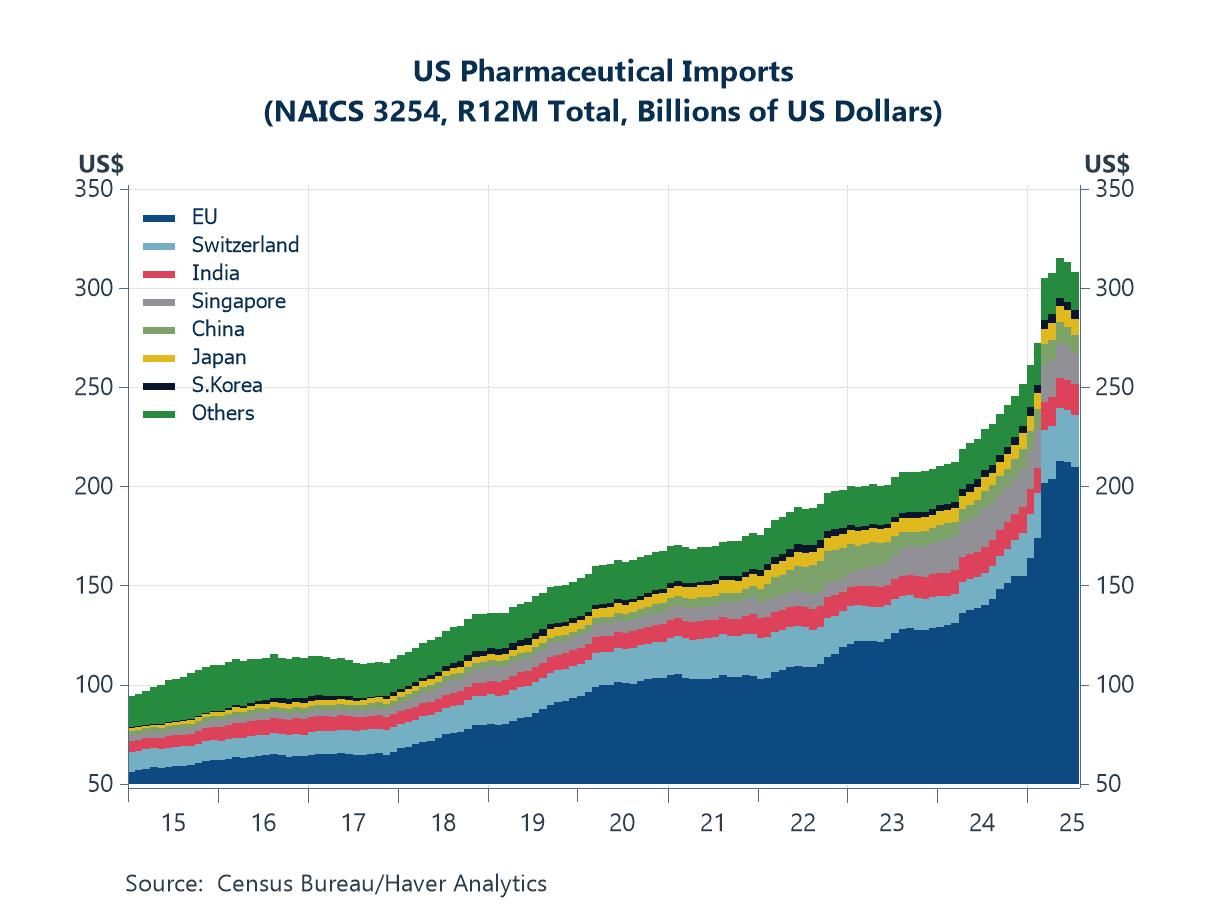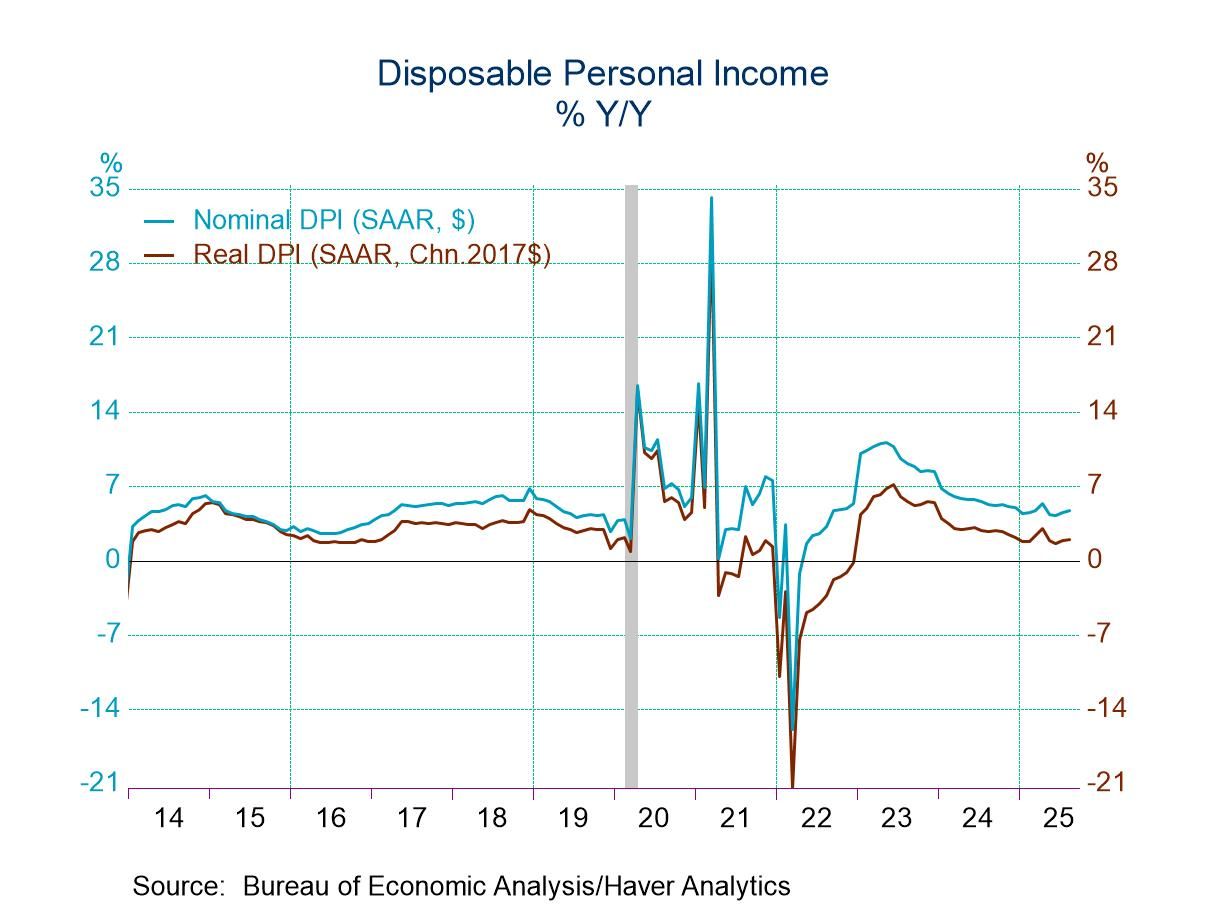ADP Employment Increase Disappoints in September
by:Tom Moeller
|in:Economy in Brief
Summary
- Gain is weakest since early-2021.
- Service-sector hiring slows; factory employment declines.
- Pay increases ease further.


Nonfarm private sector payrolls increased 89,000 last month (2.2% y/y) after rising 180,000 in August, revised from 177,000. Employment increased an unrevised 312,000 in July. A 158,000 September increase was expected in the Action Economics Forecast Survey. The gain lowered three-month growth to 193,700 per month from 315,700 as of August.
Employment at firms with over 500 employees declined 83,000 (+0.4% y/y) in September after increasing 79,000 in August. It was the fourth decline in five months. Small businesses hiring (1-49 employees) rose 95,000 during September (1.8% y/y) following a 28,000 gain. These increases compare to gains well over 200,000 per month from May through July. Employment at firms with 50-499 employees rose 72,000 (3.5% y/y) following an 81,000 August rise. These increases were well below the monthly increases which averaged 146,000 in the prior four months.
By industry group, goods-producing employment rose a negligible 8,000 (2.7% y/y) after a 17,000 August increase and a 43,000 July rise. Hiring in the manufacturing sector fell 12,000 (-1.2% y/y), the sixth decline in seven months. The number of construction jobs rose 16,000 (5.0% y/y) after a 7,000 August improvement. Natural resource & mining sector employment edged 4,000 higher (21.3% y/y) following a 1,000 August gain.
Service-producing jobs rose 81,000 last month (2.1% y/y), half the August increase and well below the 247,000 averaged in the previous four months. Holding back the overall increase, professional & business services employment declined 32,000 (-0.2% y/y) following a 19,000 August rise. Trade, transportation & utilities payrolls fell 13,000 (+1.1% y/y) in September after increasing 43,000 in the prior month. To the upside, the number of leisure & hospitality jobs rose 92,000 (9.2% y/y) after a 29,000 August increase. These compare to triple-digit gains in the each of the prior four months. Education & health services employment rose 10,000 last month (1.9% y/y) after improving 49,000 in August. Financial activities employment rose 17,000 (-0.6% y/y) after increasing 6,000 in August. Information sector employment edged 1,000 higher (-1.0% y/y) after a 10,000 August gain.
Growth in median annual pay for "job stayers" slipped to 5.9% y/y in September from 6.0% y/y in August and remained below a September 2022 high of 7.8% y/y. The earnings slowdown continued to be led by the leisure & hospitality sector, where a 6.7% y/y pay gain compared to 16.9% y/y growth in March 2022. Education & health services pay rose a lessened 6.4% y/y, down from a 7.3% y/y high last October. Financial sector earnings rose 6.2% y/y, below a 7.8% y/y high in November while information sector pay rose 5.5% y/y, below the 8.0% y/y peak in June 2022. Factory sector earnings rose 5.4% y/y versus a high of 7.8% y/y in September 2022. Pay increases for “job changers” has decelerated sharply, averaging 9.0% y/y, below the 16.4% y/y peak in June 2022.
By Census region, employment in the Northeast improved 34,000 (6.2% y/y) following a diminished 11,000 August gain. Employment in the West increased 66,000 (2.8% y/y) in September following a 29,000 increase. Jobs in the Midwest edged 2,000 higher (2.9% y/y) after falling 40,000 in August. To the downside, the number of jobs in the South fell 16,000 (-1.0% y/y) after a 29,000 increase.
The ADP National Employment Report and Pay Insights data can be found in Haver's USECON database. Historical figures date back to January 2010 for private employment. Pay data date back to October 2020. The expectation figure is available in Haver's AS1REPNA database.


Tom Moeller
AuthorMore in Author Profile »Prior to joining Haver Analytics in 2000, Mr. Moeller worked as the Economist at Chancellor Capital Management from 1985 to 1999. There, he developed comprehensive economic forecasts and interpreted economic data for equity and fixed income portfolio managers. Also at Chancellor, Mr. Moeller worked as an equity analyst and was responsible for researching and rating companies in the economically sensitive automobile and housing industries for investment in Chancellor’s equity portfolio. Prior to joining Chancellor, Mr. Moeller was an Economist at Citibank from 1979 to 1984. He also analyzed pricing behavior in the metals industry for the Council on Wage and Price Stability in Washington, D.C. In 1999, Mr. Moeller received the award for most accurate forecast from the Forecasters' Club of New York. From 1990 to 1992 he was President of the New York Association for Business Economists. Mr. Moeller earned an M.B.A. in Finance from Fordham University, where he graduated in 1987. He holds a Bachelor of Arts in Economics from George Washington University.






 Asia
Asia